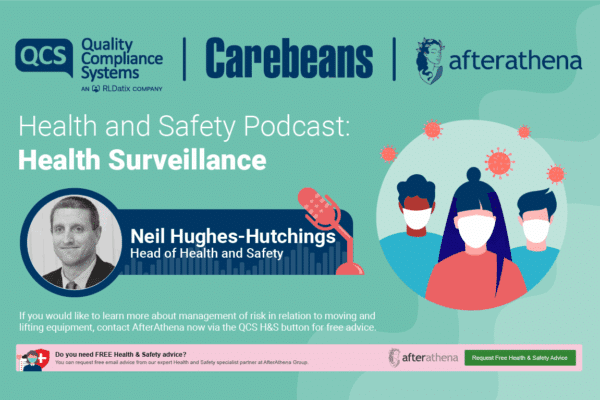Almost 100,000 babies are born prematurely or poorly each year, which is a significant proportion when considered against the fact there were almost 700,000 births in 2016. Clearly, this would be a very emotional and stressful time for parents and ACAS have produced a new guide to give employers practical tips on how to deal with such situations.
Maternity leave and pay
Mothers are entitled to 52 weeks’ maternity leave regardless of their length of service with their employer. The earliest date upon which the mother can plan to commence maternity leave is 11 weeks before the expected week of childbirth, however, if the baby arrives early then maternity leave will be triggered the day after the birth. In addition, if the mother is off sick with a pregnancy related illness during the 4 weeks prior to the expected week of childbirth, maternity leave is automatically triggered.
The mother needs to supply a MATB1 form to her employer as evidence of pregnancy and in order to enable her to claim statutory maternity pay (SMP) where she is eligible to do so. The MATB1 form is issued by a doctor or midwife around the 20-week point to confirm the pregnancy and the expected week of childbirth. Once she has given birth, there is an obligation on the mother to notify her employer of the birth, together with the date of the birth, even where her baby is born early.
The MATB1 form must generally be provided no later than the end of the third week after maternity leave has started, unless the employee has “good cause” not to provide it, in which case it must be produced within 13 weeks of maternity leave starting. A delay in producing the MATB1 form will mean there is a consequent delay in the mother receiving SMP and a complete failure to produce it within these time frames will mean the mother forfeits her entitlement to SMP.
Offering support to employees
Where a baby is born prematurely, the MATB1 form may not have been provided to the employer. The practical effect of this is that, at a time of significant and unanticipated additional cost for the parents, the mother will be without SMP. It is therefore important for the employer to explain this to the mother and remind her to provide this document as soon as possible.
In terms of the additional costs parents are likely to incur where their baby is born early or poorly, an employer may consider offering loans, salary advances, or discretionary leave at full pay, or consider whether there are any financial assistance schemes in place which the employee may be eligible for, in order to support their employee during a difficult time.
Communicating with employees is crucial, but each situation needs to be approached with compassion and the best way of communicating assessed on a case by case basis. The ACAS guidance underlines the importance of ensuring the birth is still acknowledged and suggests asking the employee what method of communication they would prefer (e.g. email, phone call, text message) and what they would like the employer to tell their colleagues. It also suggests trying to provide practical support to the employee, for example, by colleagues offering lifts to the hospital, home cooked meals or childcare for older children.
Paternity leave and pay
It is also important for employers to consider how fathers can be supported during a difficult time like this. In order to be eligible for paternity leave, the father must have been employed for a period of not less than 26 weeks ending with the week immediately prior to the 14th week before the expected week of childbirth, as confirmed in the MATB1 form. In the event of a premature birth, the employee will be treated as having the required length of service if the child is born earlier than the 14th week before the expected week of childbirth and, had they remained in employment until that 14th week, the employee would have been continuously employed for the necessary 26 weeks.
Eligible fathers are entitled to take one whole week or two consecutive weeks’ paternity leave within 8 weeks of the actual birth date or 8 weeks of the anticipated birth date, and they may be entitled to Statutory Paternity Pay (SPP) if they satisfy the relevant criteria. The latter option may be appealing to fathers where their baby has been born prematurely or has remained in hospital due to being poorly, in order to enable them to take paternity leave once the baby is home from hospital.
Notice of intention to take paternity leave should again be given no later than the 15th week prior to the expected week of childbirth or, where this is not possible, as soon as reasonably practicable. In circumstances where the baby is born early and/or is poorly, employers are encouraged to be flexible with requests to commence paternity leave and also consider other leave they can offer to fathers to enable them to take additional time off, such as annual leave or special leave.
Shared Parental Leave
Eligible parents can also now elect to share maternity leave and pay under statutory Shared Parental Leave provisions which essentially offer parents a more flexible approach to leave in the first year following the birth of their baby. It is a complicated scheme and employers should contact us for advice if such a request is received, however, employers should try to be as flexible as possible in dealing with requests, for example by agreeing shorter notification periods with employees.
Flexible working and parental leave requests
Employers should also be mindful that employees have a statutory right to request flexible working where they have worked for the employer for 26 weeks and have not made a flexible working request in the preceding 12 months. Employees are also entitled to take up to 18 weeks’ parental leave for the purposes of caring for a child; this is statutory unpaid leave that can be taken at any time and in any combination of periods, up to a child’s 18th birthday. The 18 weeks applies in respect of each child an employee cares for so an employee with 2 children could take up to 36 weeks in total.
As an employee’s plans and feelings are likely to have changed following the birth of a premature or poorly baby and employers should, therefore, anticipate flexible working requests and requests for parental leave from both fathers following the birth and mothers prior to or upon their return to work.
In such situations, employers should encourage their employees to talk to them in the first instance and try to deal with such requests informally, whether the change sought is temporary or permanent. In addition to considering temporary or permanent changes to terms and conditions, employers should also consider other options to allow extended time off, flexibility with medical appointments and a flexible return to work, for example, the use of annual leave or parental leave.
Where an informal agreement cannot be reached, employers must deal with formal requests within a 3 month period and can only reject the request on the basis of one of 7 prescribed reasons which include additional costs, the business being unable to meet customer demand and an inability to reorganise work between existing staff. Any change agreed to under a formal request is a permanent change to the employee’s terms and conditions, although it is possible to agree a trial period in the first instance. Clearly, in circumstances such as this, employers should be looking to determine an outcome to a formal request as quickly as possible, and certainly more quickly than the 3 months that the statutory regime sets out.
Bereavement
Finally, where a baby is born too early or is too poorly to survive, or if the baby is still born after 24 weeks, employers need to be aware that the parents are entitled to the same periods of maternity and paternity leave. ACAS has produced further guidance in relation to managing bereavements which employers should have regard to in these circumstances: http://www.acas.org.uk/media/pdf/7/a/Managing-bereavement-in-the-workplace-a-good-practice-guide.pdf






